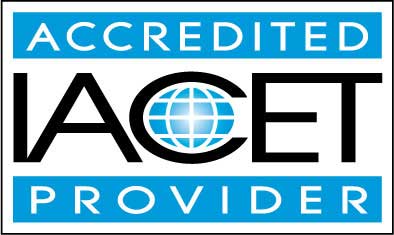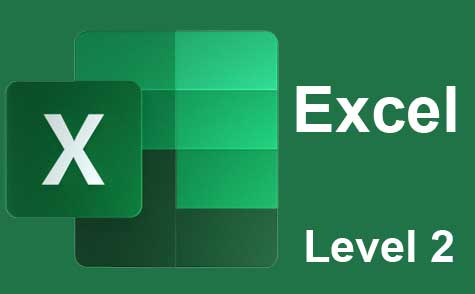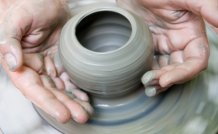Online Class: Interior Design 101

no certificate
with CEU Certificate*
-
15Lessons
-
25Exams &
Assignments -
4,034Students
have taken this course -
10Hours
average time -
1.0CEUs
Course Description
In order to create an interior environment, designers need to think about the form and functionality of the space. The form refers to the look and feel. The functionality refers to how they space will be practically used. In order to effectively blend form and functionality, designers need to rely upon many resources, guidelines, and professionals.
Interior designers often tend to be interior decorators. After all, designers are often responsible for all aspects of a project, including the design, development, and finishing touches. However, interior decorators may not necessarily be interior designers; designers need to have more in-depth knowledge than decorators.
While many interior designers are also decorators, designers do not generally take on other professional roles, such as plumber, carpenter, electrician, or otherwise. Therefore, designers must work closely with many other industry professionals.
Interior designers also have the liberty to be self-employed or to work with a firm. Either way, there are some business skills and best practices that every interior designer should use in order to be successful.
This course is designed to teach you how to be an interior designer by focusing on interior design from a macro level. If you decide to pursue an interior design career after reading about everything that will be required of you if you choose to pursue a career in interior design, then you will spend years learning the minute details that are essential to creating a successful design.
Note: This course focuses on all aspects of interior design. While interior decorating plays a large role in interior design, it is important to remember that the two are not the same. This course will not go into great detail about interior decorating, but, rather, will provide an overview of the kind of information interior designers will need to know.
Course Motivation
Interior Designers Work With Professionals in Many Other Fields.
Often interior designers will have an integral role in the decorating of a space because of their oversight and planning role. In a sense, an interior designer is often like a project manager, with his or her hands in many pots. Because of their holistic approach to a space, interior designers are often called in to consult with clients before a project begins, especially on new construction projects.
Interior decorators, however, have very specialized roles. Decorators are charged with working within a developed space to create a particular feel. Unlike interior designers, decorators do not manipulate the foundations of a space. Instead, they must be able to see the possibilities that exist in the current space. Interior decorators may have more in-depth knowledge of design principles, styles, and trends than interior designers, as well.
In most cases, an interior designer and an interior decorator will work closely together; they may also be the same person. However, interior decorators may not work with professionals in other trades, the way an interior designer does.
Both interior decorators and interior designers must be skilled at selecting:
-
Window treatments
-
Bedding
-
Furniture
-
Artwork
-
Accessories
-
Storage units
-
Light fixtures
-
Carpets and rugs
-
Colors
-
Fabrics and textures
-
Design styles
-
Layout
-
Designs for special events
-
And more
However, interior designers must take their knowledge a few steps further to include:
-
Space planning
-
Kitchen and bath design
-
Plumbing layout and fixtures
-
Lighting layout and fixtures
-
Sound design
-
Flooring
-
Custom carpentry
-
Stone and tile
-
Climate control
-
Windows and doors
-
Cabinetry
-
Specialty design, such as LEED
-
Building codes
-
Americans With Disabilities Act requirements
-
And more
There are building codes and regulations for every space, but they may vary based on the type of space.
Interior Design Specialties
As with any professional discipline, the field of interior design encompasses many different specialties. Many interior designers work within all specialties, but a specialty is not required. Also, some interior designers choose to limit their projects to one particular specialty. These specialties include:
-
Corporate
-
Retail
-
Government
-
Healthcare
-
Hospitality
-
Institutional
-
Residential
-
Sustainability
In order to design a successful space in any of these specialty groups, interior designers need to be aware of the particular government codes and regulations, which can differ from structure to structure.
Interior designers will also want to be sure they understand how each space will be used – and by whom – so they can follow best practice design standards. For example, the upholstery that an interior designer uses for a public space may differ greatly from the upholstery an interior designer selects for a residential space.
- Completely Online
- Self-Paced
- Printable Lessons
- Full HD Video

- 6 Months to Complete
- 24/7 Availability
- Start Anytime
- PC & Mac Compatible
- Android & iOS Friendly
- Accredited CEUs

Course Lessons
Lesson 1: Introduction to Interior Design
 Lesson 1 Video
Lesson 1 Video Lesson discussions: Reasons for Taking this Course
Lesson discussions: Reasons for Taking this Course Complete Assignment: An Introduction
Complete Assignment: An Introduction Complete: Lesson 1 Assignment
Complete: Lesson 1 Assignment Assessment: Lesson 1 Exam
Assessment: Lesson 1 Exam
Lesson 2: Evolution of Design
 Lesson 2 Video
Lesson 2 Video Assessment: Lesson 2 Exam
Assessment: Lesson 2 Exam
Lesson 3: Basic Interior Design Decorating Principles
 Lesson 3 Video
Lesson 3 Video Assessment: Lesson 3 Exam
Assessment: Lesson 3 Exam
Lesson 4: Color
 Lesson 4 Video
Lesson 4 Video Assessment: Lesson 4 Exam
Assessment: Lesson 4 Exam
Lesson 5: Major Design Styles
 Lesson 5 Video
Lesson 5 Video Complete: Lesson 5 Assignment
Complete: Lesson 5 Assignment Assessment: Lesson 5 Exam
Assessment: Lesson 5 Exam
Lesson 6: Design Codes
 Lesson 6 Video
Lesson 6 Video Complete: Lesson 6 Assignment
Complete: Lesson 6 Assignment Assessment: Lesson 6 Exam
Assessment: Lesson 6 Exam
Lesson 7: Standards
 Lesson 7 Video
Lesson 7 Video Complete: Lesson 7 Assignment
Complete: Lesson 7 Assignment Assessment: Lesson 7 Exam
Assessment: Lesson 7 Exam
Lesson 8: Licensing and Certification
 Lesson 8 Video
Lesson 8 Video Complete: Lesson 8 Assignment
Complete: Lesson 8 Assignment Assessment: Lesson 8 Exam
Assessment: Lesson 8 Exam
Lesson 9: Areas of Specialization
 Lesson 9 Video
Lesson 9 Video Complete: Lesson 9 Assignment
Complete: Lesson 9 Assignment Assessment: Lesson 9 Exam
Assessment: Lesson 9 Exam
Lesson 10: LEED Building Certification
 Lesson 10 Video
Lesson 10 Video Assessment: Lesson 10 Exam
Assessment: Lesson 10 Exam
Lesson 11: LEED Professional Certification
 Lesson 11 Video
Lesson 11 Video Assessment: Lesson 11 Exam
Assessment: Lesson 11 Exam
Lesson 12: Bodies of Knowledge
 Lesson 12 Video
Lesson 12 Video Assessment: Lesson 12 Exam
Assessment: Lesson 12 Exam
Lesson 13: 10 Things Every Professional Interior Designer Should Do to Have a Successful Business
 Lesson 13 Video
Lesson 13 Video Complete: Lesson 13 Assignment
Complete: Lesson 13 Assignment Assessment: Lesson 13 Exam
Assessment: Lesson 13 Exam
Lesson 14: Interior Design Associations
 Lesson 14 Video
Lesson 14 Video Complete: Lesson 14 Assignment
Complete: Lesson 14 Assignment Assessment: Lesson 14 Exam
Assessment: Lesson 14 Exam
Lesson 15: Resources for Interior Designers
 Lesson 15 Video
Lesson 15 Video Lesson discussions: Your Opinion Matters: Course Rating; Program Evaluation Follow-up Survey (End of Course); Course Comments; Course Comments
Lesson discussions: Your Opinion Matters: Course Rating; Program Evaluation Follow-up Survey (End of Course); Course Comments; Course Comments Assessment: Lesson 15 Exam
Assessment: Lesson 15 Exam Assessment: The Final Exam
Assessment: The Final Exam
Learning Outcomes
- Define what interior design is.
- Describe evolution of design.
- Define basic interior design decorating principles.
- Identify color.
- Recognize major design styles.
- Summarize design codes.
- Define standards.
- Summarize licensing and certification.
- Identify areas of specialization.
- Identify bodies of knowledge.
- Summarize 10 things every professional interior designer should do to have a successful business.
- Identify interior design associations.
- Recognize resources for interior designers.
- Demonstrate mastery of lesson content at levels of 70% or higher.
Additional Course Information

- Document Your Lifelong Learning Achievements
- Earn an Official Certificate Documenting Course Hours and CEUs
- Verify Your Certificate with a Unique Serial Number Online
- View and Share Your Certificate Online or Download/Print as PDF
- Display Your Certificate on Your Resume and Promote Your Achievements Using Social Media

Choose Your Subscription Plan
No Certificate / No CEUs
This course only
| Includes certificate | X |
| Includes CEUs | X |
| Self-paced |

|
| Instructor support |

|
| Time to complete | 6 months |
| No. of courses | 1 course |
Certificate & CEUs
This course only
| Includes certificate |

|
| Includes CEUs |

|
| Self-paced |

|
| Instructor support |

|
| Time to complete | 6 months |
| No. of courses | 1 course |
Certificates & CEUs
Includes all 600+ courses
| Includes certificate |

|
| Includes CEUs |

|
| Self-paced |

|
| Instructor support |

|
| Time to complete | 12 Months |
| No. of courses | 600+ |
Certificates & CEUs
Includes all 600+ courses
| Includes certificate |

|
| Includes CEUs |

|
| Self-paced |

|
| Instructor support |

|
| Time to complete | 24 Months |
| No. of courses | 600+ |
Student Testimonials
- "This course help a lot and more about about my goals to became an professional interior designer." -- Lolomanaia T.
- "Instructor was outstanding!" -- Doug W.
- "The lessons were informative and very helpful." -- Johanna T.
Related Courses
-
 7 hours
0.7 CEUs
Buying and Selling Antiques and Collectibles
+ More Info
7 hours
0.7 CEUs
Buying and Selling Antiques and Collectibles
+ More Info
-
 5 hours
0.5 CEUs
Starting Your Own Cleaning Business
+ More Info
5 hours
0.5 CEUs
Starting Your Own Cleaning Business
+ More Info
-
 8 hours
0.8 CEUs
Digital Photography 101
+ More Info
8 hours
0.8 CEUs
Digital Photography 101
+ More Info
-
 7 hours
0.7 CEUs
Microsoft Excel Level 2
+ More Info
7 hours
0.7 CEUs
Microsoft Excel Level 2
+ More Info
-
 7 hours
0.7 CEUs
Soap Making 101
+ More Info
7 hours
0.7 CEUs
Soap Making 101
+ More Info
-
 4 hours
0.4 CEUs
How to Bake Cookies
+ More Info
4 hours
0.4 CEUs
How to Bake Cookies
+ More Info
-
 13 hours
1.3 CEUs
Image Consultant
+ More Info
13 hours
1.3 CEUs
Image Consultant
+ More Info
-
 14 hours
1.4 CEUs
Candle Making 101
+ More Info
14 hours
1.4 CEUs
Candle Making 101
+ More Info
-
 5 hours
0.5 CEUs
Home Safety
+ More Info
5 hours
0.5 CEUs
Home Safety
+ More Info
-
 6 hours
0.6 CEUs
Etiquette Consultant
+ More Info
6 hours
0.6 CEUs
Etiquette Consultant
+ More Info
-
 11 hours
1.1 CEUs
Cooking and Baking 101
+ More Info
11 hours
1.1 CEUs
Cooking and Baking 101
+ More Info
-
 9 hours
0.9 CEUs
Landscaping 101
+ More Info
9 hours
0.9 CEUs
Landscaping 101
+ More Info
-
 17 hours
1.7 CEUs
Photography 101: Beginner to Intermediate
+ More Info
17 hours
1.7 CEUs
Photography 101: Beginner to Intermediate
+ More Info
-
 8 hours
0.8 CEUs
Aromatherapy (Intermediate to Advanced)
+ More Info
8 hours
0.8 CEUs
Aromatherapy (Intermediate to Advanced)
+ More Info
-
 9 hours
0.9 CEUs
How to Decorate a Room
+ More Info
9 hours
0.9 CEUs
How to Decorate a Room
+ More Info
-
 5 hours
0.5 CEUs
Bread Baking 101
+ More Info
5 hours
0.5 CEUs
Bread Baking 101
+ More Info
-
 7 hours
0.7 CEUs
How to Start a Craft Business
+ More Info
7 hours
0.7 CEUs
How to Start a Craft Business
+ More Info
-
 9 hours
0.9 CEUs
Aromatherapy 101
+ More Info
9 hours
0.9 CEUs
Aromatherapy 101
+ More Info









